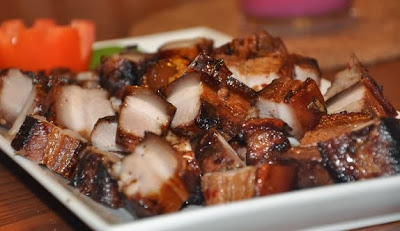It is the Ibaloi etag. But kinuday, unlike the etag, includes much of the red meat, fats, skin and bones without salt curing but smoking only. The procedure has nailed its distinction.

In history, Ibaloi folks used the fireplace with “shakelan” or tripod on it for cooking food to make kinuday. In order to show you how to make kinuday, I should rather give you an account about this kinuday thing to give you a hint. When an Ibaloi elder received his “sa-sakey” or “wat-wat” (a slab/s of meat taken home from a cañao fest), he would usually turn them into kinuday meat. He would find an elongated hard and thin stick and then pierce it through the slabs at their ends one after the other until they would look like hanged laundries, then he would hang the stick of meat above and across the “shakelan” using poles for hanging or hanging hooks so that every time a food is being cooked the smoke and food vapors would process the meat into kinuday. Households in the olden times have their foods cooked in the morning, midday (sometimes) and in the evening thus the smoking of the kinuday was as frequently done. For pig’s meat, it would be ready for consumption after four months and the cow’s meat, after seven months. The Ibaloi elders usually leave the kinuday hanged even after done with the process. And when his visitor/s or guest/s have come to his home he could un-hang and offer the kinuday to be cooked as ingredient to the main dish or just cooked plain for meal or for wine chaser.




